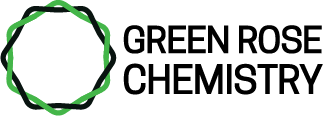
When you’re developing sustainable chemical products, choosing the right ecolabel can be an important part of the marketing process. Done right, this step helps you find a market and build trust with customers, making the fees worthwhile. Done wrong, it can lead to accusations of greenwashing. The EU Ecolabel is one option that’s broadly recognised and trusted.
What products are covered by the EU Ecolabel?
Each green label offers its own unique pros and cons, and choosing the right ecolabel will depend on your product, industry, and target customer. The EU Ecolabel applies to a wide selection of chemical products. It’s broken down into the following product groups, each with its own assessment criteria:
Cleaning
Dishwasher detergents
Washing-up detergents
Hard surface cleaning products
Indoor cleaning services
Industrial and institutional automatic dishwasher detergents
Industrial and institutional laundry detergents
Home laundry detergents
Clothing and textiles
Footwear
Textile products
Coverings
Hard covering products
Wood-, cork- and bamboo-based floor coverings
Do it yourself
Paints and varnishes
Electronic equipment
Electronic displays
Furniture and mattresses
Furniture
Mattresses
Gardening
Growing media, soil improvers and mulch
Holiday accommodation
Tourist accommodation
Lubricants
Lubricants
Paper
Graphic paper
Printed paper, stationery, and paper carrier bags
Tissue paper and tissue products
Personal and animal care products
Absorbent hygiene products
Animal care products
Cosmetic products

How does the EU Ecolabel assess sustainability?
Each product group is divided into “hotspots” – the areas which are of most concern to human health and the environment. Steps your company takes to mitigate these hotspots forms the basis of your assessment. Assessment broadly covers the following areas:
Raw materials
What is the origin of the raw materials? How much land is used in their production? Do they create loss of habitat? What is the energy of extraction?
Hazardous substances
Are there any remaining in the product or used in its manufacture? Has the process been screened for SVHCs?
Energy consumption
Have you laid out plans for energy reduction? The use of renewable energy is encourage
Air and water emissions
Are your emissions of SOx, NOx and CO2, VOCs, and dust, etc. within set limits?
Waste generation
Have you set minimum targets for the reuse and recycling of process waste?
Consumer information
Do you have sufficient advice on efficient and safe use, clearly visible on or with the product?
Corporate social responsibility
Are the labour conditions safe? Are raw materials being sourced by responsible mining?
Plastics
Are any plastic components marked appropriately? What amount of recycled content is being used? Have you avoided toxic metals?
For example, the Ecolabel criteria for detergents take into account their release into waterways. Ecolabel detergents must be composed of biodegradable surfactants. Certain substances are strictly banned, such as EDTA, microplastics and triclosan. There are also restrictions on health hazards detergents must not have, including carcinogenicity, mutagenicity, reprotoxicity, acute toxicity, skin and respiratory sensitisation. Other product groups have similar restrictions to ensure safe ingredients, such as hard coverings, which cannot use lead or cadmium ink.

What are the benefits of the EU Ecolabel?
The European Commission lists the following six reasons for choosing the EU Ecolabel to support your business:
- Consumers are increasingly demanding credentials proving the environmental sustainability of the things they buy.
- Working through the compliance process can highlight areas to optimise efficiency and result in financial savings.
- Public procurement is increasingly being help up to higher environmental standards.
- It is a reliable way to communicate environmental information to consumers.
- Comprehensive manuals and step-by-step information are available online to make the application process simple.
- Discounted fees exist for SMEs, micro-enterprises and applicants from developing economies.
How do I apply?
A step-by-step guide on how to apply and the is available on the European Commission website. Fees vary by region and typically include costs for:
- Application (200-2,000 EUR)
- Extension of license/modification fee (0-2,000 EUR)
- Annual renewal (0-25,000 EUR)*
- Inspection (generally expenses)
*Note that, in some regions, the cost is indexed to annual turnover.

